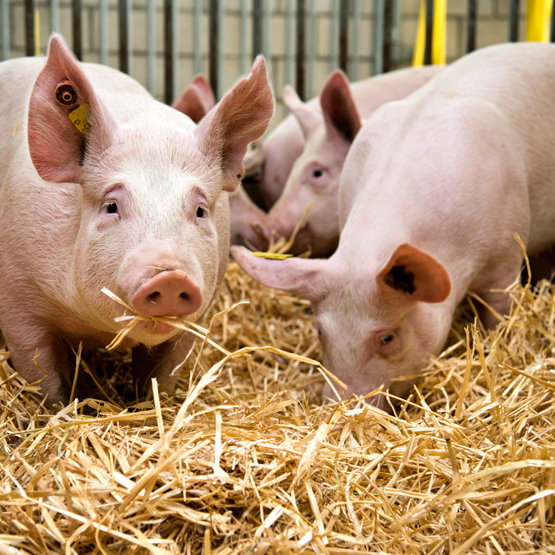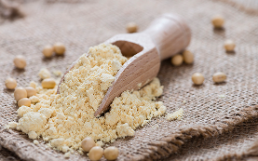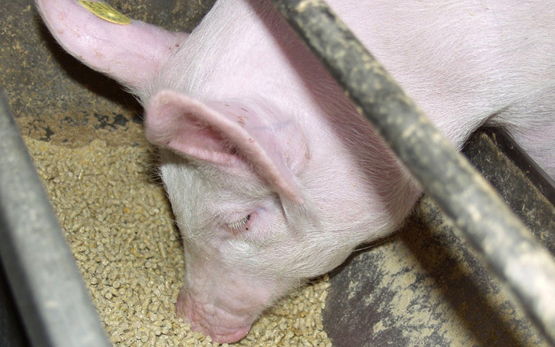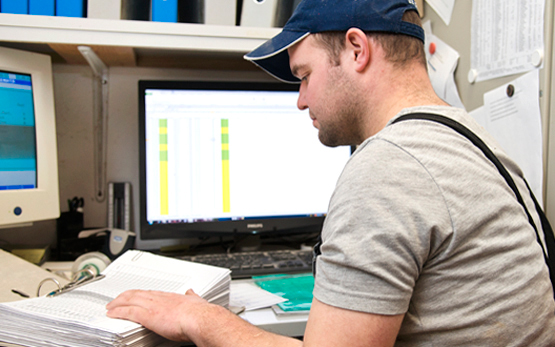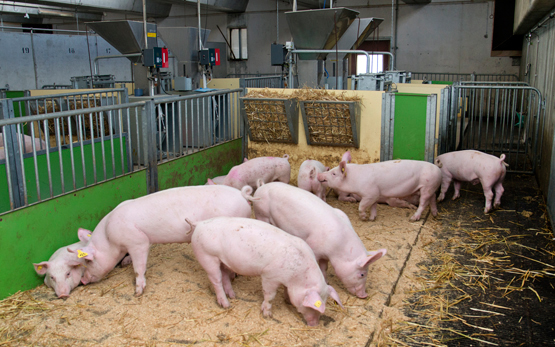If Switzerland were to focus exclusively on fattening pigs that can get by on less protein, the country could save an amount of crude protein equivalent to the amount of soya imported to feed pigs.
Every year, around 75,000 tonnes of soya as a protein source, most of it produced abroad, winds up in the feed troughs of Swiss pigs. These soya imports are controversial owing to their long transport routes from South America, and the clearing of old-growth forest for farmland.
Whilst examining the feed standards for pigs, Agroscope researchers made a surprising discovery: there are pigs that deliver the same performance on less protein. Around thirty per cent of the animals show entirely normal growth with an underprovision of protein. What’s more, they excrete less nitrogen, thereby reducing environmental pollution.
Adapting pig type to feed
With targeted breeding of the more efficient pigs, a significant percentage of soya imports could be spared. Agroscope researcher Peter Stoll is even convinced that it would allow Switzerland to dispense completely with soybean imports for fattening pigs. This would lead to a reduction in the cost of feed, and to domestic or alternative protein sources having a better chance. In concrete terms, it would bring about an annual savings of CHF 18 million and lower excretion levels of 5300 tonnes of nitrogen in Swiss pig production. As Peter Stoll explains: “All in all, a rethink of pig breeding – namely, adapting genotype to feed – would substantially increase the sustainability of pig production over the longer term.”
Less protein, no losses
And what about animal health and meat quality? “The pigs in our research project that showed normal growth when undersupplied with protein were even better off, since underprovision meant that they received a needs-based feeding for their type” says Peter Stoll. As regards meat quality, Agroscope is currently conducting a further project. Peter Stoll sums up the situation thus: “The overarching objective of pig breeding must be the selection of animals that forfeit nothing in terms of health, daily weight gain, meat quality or fertility when fed less protein.”
Bringing the industry on board
These findings are especially valuable for pigs fed an organic diet, since they excrete more nitrogen than those on conventional fattening farms. This is because organic pig producers dispense with synthetic amino acids in the feed, which raises the amount of nitrogen in the pigs’ excreta.
Thanks to the support of the Federal Office for Agriculture (FOAG), a joint research project with the Research Institute of Organic Agriculture (FIBL), the School of Agricultural, Forest and Food Sciences (HAFL) and the Service Centre for Pig Production (SUISAG) is currently being developed.
The aim of this project is to determine the rations that enable fattening pigs to be fed a diet of 100% organic feedstuffs, allow ecological factors to be taken into account, and yield a meat quality that fulfils the expectations of consumers.
Raising a more efficient pig
This project also includes a module in which SUISAG tests whether the feedstuffs – low-nitrogen or conventional – have an influence on which pigs are selected for further breeding. Is it always the same genotypes, or are there different ones?
For Agroscope and its research partners, practical cooperation with SUISAG is extremely valuable, since the organisation’s access to animals from throughout Switzerland contributes to the creation of a wide gene pool. These are ideal conditions for large-scale trials for determining how to achieve more-efficient breeding lines of fattening pigs. One day, producers will be able to rely on fattening pigs that get by on less protein, and will therefore be able to reduce soya imports.


